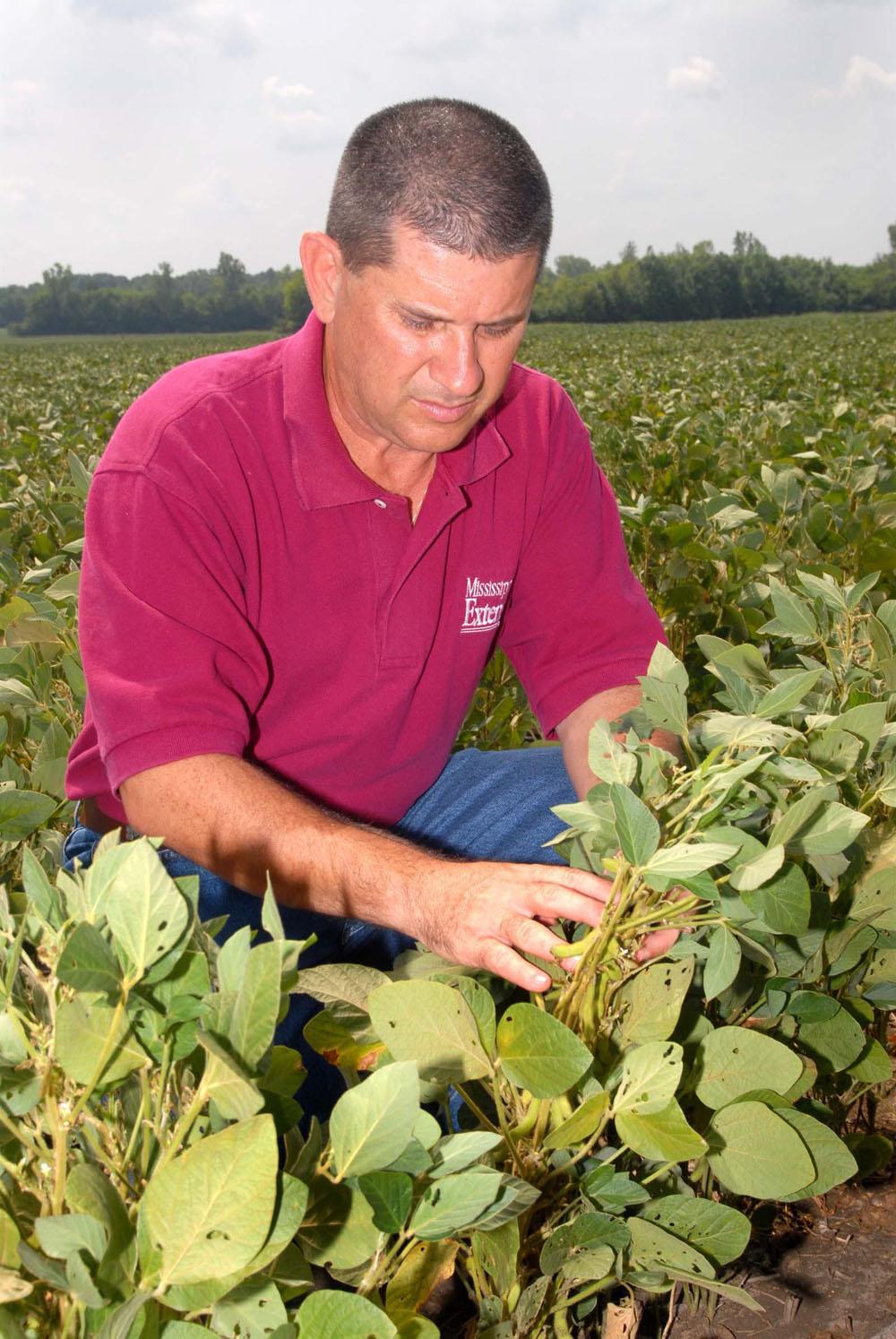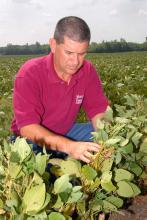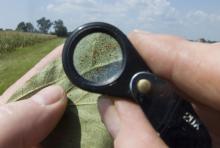Information Possibly Outdated
The information presented on this page was originally released on August 4, 2006. It may not be outdated, but please search our site for more current information. If you plan to quote or reference this information in a publication, please check with the Extension specialist or author before proceeding.
Soybean rust makes first appearance in crop
MISSISSIPPI STATE -- Asian soybean rust has made its first 2006 appearance in Mississippi soybean fields, but it's probably arrived too late to have much, if any, impact on the crop.
Rust was found in south Mississippi on Aug. 1, said Mississippi State University Extension Service soybean specialist Alan Blaine.
“Rust was found in a Jefferson County field and in kudzu in the same area,” Blaine said. “Growers in south Mississippi with soybeans still in the reproductive stage possibly need to consider applying a fungicide to their crop if they haven't already done so. The crop in north Mississippi and the Delta, our major growing areas, are most likely far enough north and beyond the stage where rust will cause damage.”
Current environmental conditions are not conducive for rust to thrive, Blaine added, so the moisture situation, the state of the crop, time of the year and whether or not a fungicide has been applied should all influence your decision concerning rust.
“So far everything is south of I-20, and I encourage producers to stay abreast of our monitoring efforts,” he said. “Based on the current level of infection, it is doubtful rust is going to be a problem this season.”
Scouting for Asian soybean rust will continue throughout the state, Blaine added. The most current information about rust sightings is available via a telephone hotline at (800) 516-0865. The hotline is a joint project of MSU and Louisiana State University, with funding from the Mississippi Soybean Promotion Board and BASF chemical company.
This summer's extreme heat and short rainfall have soybeans maturing earlier than usual in the major growing areas the state.
“We've started harvesting about 20 to 21 days earlier than we normally do,” Blaine said.
For producers with nonirrigated, or dryland, soybeans in the Quitman County area of northwest Mississippi, yields are low.
About 30 percent to 35 percent of the Quitman County dryland crop was harvested during early August, said Extension county director Mack Young.
“Yields in dryland fields are disappointing at about 10 to 15 bushels an acre,” he said. “Irrigated fields look much better, and harvesting will begin closer to the usual dates in late August and early September.”
High fuel costs are making irrigation expensive.
“Irrigation is costing producers anywhere from about $6 an acre up to almost $10 per application of about an inch of water to a field,” Young said. “The cost depends on the irrigation system and the type of fuel used.”
Dryland soybean fields are yielding about 15 to 30 bushels per acre in the central Delta's Humphreys County, said Extension county director Eddie Harris.
“A 30-bushel-an-acre yield is good, considering how dry it's been this year,” Harris said. “The difference between the 30-bushel fields and those yielding 15 is that the higher yielding fields caught more of the few scattered showers this summer.”
Harvesting of irrigated soybeans is expected to begin in a week to 10 days in the Humphreys County area.
“We're hoping for about 50 bushels an acre on flood-irrigated fields,” Harris said. “Most pivot-irrigated fields may not be as good because the pivot systems just couldn't pump enough water to keep up with the drought conditions.”
Yields of early-planted soybeans are low in the east-central area of the state, according to Dennis Reginelli, Extension area agent in Noxubee County.
“Most of the fields harvested this week were only yielding 8 to 15 bushels an acre,” he said. “This part of the crop also is poor in quality because of the hot, dry conditions.”
There has been scattered rainfall in the eastern area of the state recently, and Reginelli said the moisture has improved the yield potential of later planted soybeans.
The fast pace of this year's earlier-than-usual soybean harvest, he added, gives producers time to get ready for the 2007 crop.
“Growers need to start preparing fields for next year,” he said.





